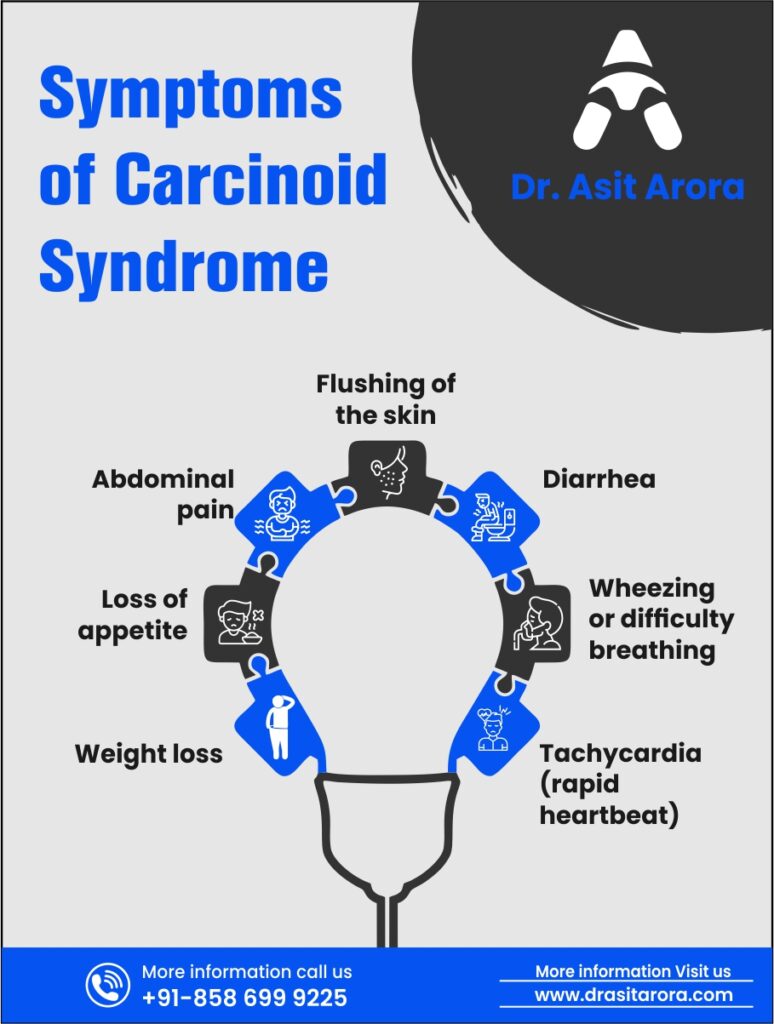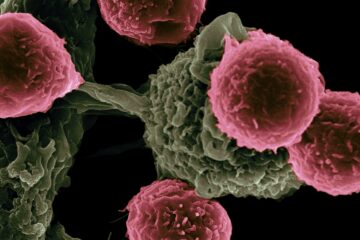If you or someone you know has been diagnosed with neuroendocrine tumors (NETs), it’s essential to understand the possible connection to carcinoid syndrome. This article will explore neuroendocrine tumors, how they can cause carcinoid syndrome, and the symptoms and potential treatment options.
Understanding Neuroendocrine Tumors
Neuroendocrine tumors are a rare type of cancer that develops in cells of the neuroendocrine system. The neuroendocrine system controls the release of hormones in the body. These tumors can develop in different body parts, such as the lungs, pancreas, and intestines. NETs are often slow-growing. They can go unnoticed for years, making them difficult to diagnose.
It’s important to note that not all NETs cause symptoms, and some NETs may not require treatment. However, functioning NETs release hormones into the bloodstream, which can cause many symptoms. These symptoms can vary depending on the type of hormone released. Symptoms may include diarrhea, flushing of the skin, and difficulty breathing.
How NETs Can Cause Carcinoid Syndrome
Carcinoid syndrome is a group of symptoms that occur when certain NETs release hormones into the bloodstream. These hormones, such as serotonin and histamine, can cause several symptoms, including flushed skin, diarrhea, and difficulty breathing.
NETs are often present in the digestive system, specifically the small intestine, appendix, and rectum. When these tumors release hormones, they travel to the liver, where the liver can break them down. However, if the liver cannot break down these hormones, they can build up in the body and cause carcinoid syndrome.
Symptoms of Carcinoid Syndrome
Carcinoid syndrome symptoms can vary depending on the location and size of the tumor, as well as the type of hormone released. Some common symptoms include:
- Flushing of the skin
- Diarrhea
- Wheezing or difficulty breathing
- Tachycardia (rapid heartbeat)
- Abdominal pain
- Loss of appetite
- Weight loss

Diagnosing Neuroendocrine Tumors and Carcinoid Syndrome
Diagnosing neuroendocrine tumors and carcinoid syndrome can be challenging because their symptoms are often similar to those of other diseases. However, several tests can help with diagnosis, including blood tests, imaging tests, and endoscopy.
Blood tests can check for hormone levels in the blood. They can also detect certain markers that may indicate the presence of a tumor. Imaging tests, such as CT scans, MRIs, and DOTA PET scans, can help identify the location and size of the tumor.
Endoscopy allows a doctor to view the inside of the digestive tract and take tissue samples for biopsy. During a biopsy, a small tissue sample is removed and analyzed under a microscope for signs of cancer.
Treatment Options for Neuroendocrine Tumors and Carcinoid Syndrome
The treatment options for neuroendocrine tumors and carcinoid syndrome depend on the size, location, type, and symptoms of the tumor. Treatment options may include:
Surgery
Surgery is often the preferred treatment if the tumor is localized and has not spread to other body parts. Surgery may include removing the entire diseased organ or just a portion, depending on the organ’s location and tumor size.
Laparoscopic Resection
Laparoscopic resection is a minimally invasive procedure. It uses small incisions and a laparoscope (a thin tube with a camera) to remove the tumor.
The surgeon will make small incisions in the abdomen and insert the laparoscope and other surgical instruments during the procedure. The surgeon will then locate and remove the tumor with any nearby lymph nodes that may be affected.
One of the benefits of a laparoscopic resection is that it is less invasive than traditional open surgery. Thus, it has a shorter hospital stay and faster recovery time.
However, not all NETs are suitable for laparoscopic resection. Larger tumors or those located in difficult-to-reach areas may require traditional open surgery. It’s important to discuss all available surgical options with your doctor to determine the best treatment option for you.
Radiation therapy
Radiation therapy uses high-energy beams to kill cancer cells. It can treat tumors that are difficult to remove surgically.
Chemotherapy
Chemotherapy uses drugs to kill cancer cells. It can treat NETs that have spread to other parts of the body.
Somatostatin analogs
Somatostatin is a hormone that can slow the release of other hormones in the body. Somatostatin analogs are synthetic versions of this hormone that treat NETs that release hormones. These drugs can help relieve symptoms and slow the growth of the tumor.
Targeted therapy
Targeted therapy targets specific proteins or molecules related to the growth and spread of cancer cells. This treatment can treat certain types of NETs.
In addition to medical treatments, lifestyle changes can also help manage symptoms of carcinoid syndrome. These changes may include dietary modifications, such as avoiding trigger foods, and medications to manage symptoms, such as antidiarrheal medications.
Overall, neuroendocrine tumors and carcinoid syndrome can be challenging to diagnose and treat. Early diagnosis and treatment can improve outcomes and quality of life. While NETs are rare, it’s essential to understand the possible connection to carcinoid syndrome and the available treatment options.
Why Choose Dr. Asit Arora?
Dr. Asit Arora is an experienced surgical gastroenterologist and gastrointestinal & HPB oncosurgeon with over a decade of experience in his field. He has held senior positions at renowned hospitals such as Max Super Speciality Hospital Saket and Dharamshila Narayana Superspeciality Hospital. He is well-known for his expertise in laparoscopic and robotic surgery for gastrointestinal and HPB cancers. Dr. Arora’s commitment to providing personalized care makes him an excellent choice for patients seeking high-quality treatment for their condition.





[…] viagra 25 mg generic […]
[…] clomid 100mg […]
[…] street price of 100 mg viagra […]
[…] 25mg sildenafil reddit […]
[…] ginseng root for men’s daily vitality […]
[…] viagra 25 50 oder 100 mg […]
[…] buy viagra 25mg online […]
[…] cost of sildenafil 50mg […]
[…] how much is cialis in mexico […]
[…] sildenafil 50 mg […]